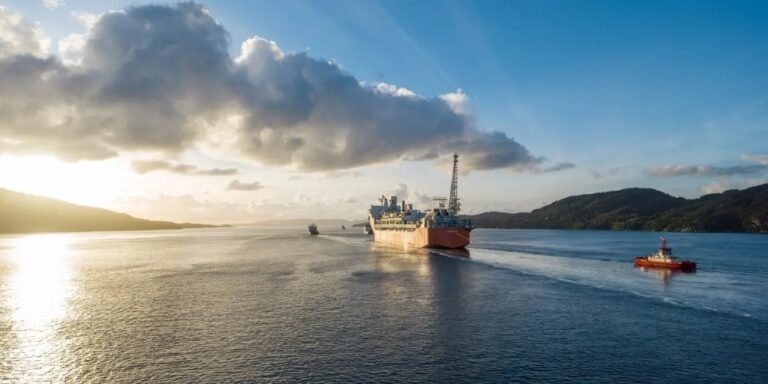Equinor’s Johan Castberg Field in the Barents Sea Reaches Full Production Capacity
The Barents Sea, known for its vast oil and gas reserves, has a new player in town. Norwegian state-owned energy giant Equinor has announced that its field, Johan Castberg, is now producing at full capacity, marking a significant milestone in the region’s energy production.
With a peak capacity of 220,000 barrels of oil per day, Johan Castberg has exceeded expectations by achieving this milestone on June 17. This achievement not only boosts energy deliveries from the Barents Sea by 150% but also solidifies Equinor’s position as a key player in Norway’s energy sector.
The Field and its Significance
Johan Castberg is strategically located approximately 100 kilometers north of the Snøhvit field in the Barents Sea. It encompasses resources from three oil discoveries: Skrugard, Havis, and Drivis, all within production licence 532. The field is expected to remain operational for the next 30 years, contributing significantly to Norway’s energy production.
Kjetil Hove, Equinor’s Executive Vice President for Exploration & Production Norway, expressed his excitement about Johan Castberg’s impact, stating, “Johan Castberg represents a gamechanger for the importance of the Barents Sea for Norway’s future as an energy nation.”
Future Plans and Developments
Looking ahead, Equinor aims to increase the field’s reserves by 250-550 million barrels through additional drilling and exploration activities. The company plans to extend plateau production with six new wells and initiate the Isflak project for rapid field development, with an investment decision expected by the end of the year.
Additionally, Equinor is exploring new exploration targets in the Johan Castberg area and plans to drill new exploration wells near Johan Castberg and Goliat using two rigs. These efforts will further enhance the company’s presence in the Barents Sea and contribute to its growth targets.
The FPSO Unit and Operational Success
The floating production, storage, and offloading (FPSO) unit, FPSO Johan Castberg, plays a crucial role in the field’s operations. With a design storage capacity of 1.1 million barrels of oil, the FPSO has been instrumental in ensuring a smooth start-up and steady production at Johan Castberg.
Since its first cargo loaded by the tanker Bodil Knutsen on May 25, the FPSO has been operating efficiently, marking a new era of production in the Barents Sea. Equinor continues to deliver oil from the Norwegian Continental Shelf to Europe, showcasing the region’s importance in the global energy market.
Conclusion
The successful operation of Johan Castberg at full capacity is a testament to Equinor’s expertise and commitment to sustainable energy production. As the field continues to thrive, it will not only boost Norway’s energy output but also contribute to the country’s position as a key player in the global energy landscape.
With strategic plans for expansion and development in place, Equinor is poised to further solidify its presence in the Barents Sea and drive innovation in the energy sector. Johan Castberg’s success sets a promising precedent for future projects and underscores the region’s potential for continued growth and prosperity.

